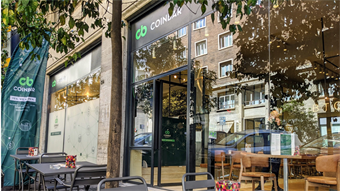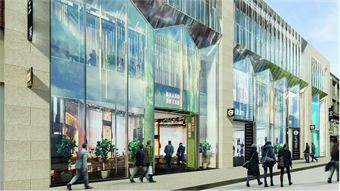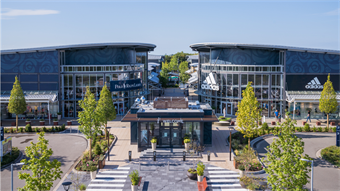Poland, Portugal and Ireland among retail winners in Europe
- In Research Hub
- 07:20, 25 April 2018
- 18526 Views

New research from Union Investment Real Estate into the attractiveness of retail markets worldwide sees Poland, Portugal, Ireland and the Czech Republic shine in a changing European market, while North America maintains its considerable appeal.
Retail markets worldwide appear to be in good shape at the beginning of 2018, with a further increase in optimism among both customers and businesses driving the positive trend, according to new research from Union Investment Real Estate.
On the downside, higher consumer prices and below-average growth of retail sales are having a negative impact, particularly in Europe, the research shows.
The German investment manager’s Global Retail Attractiveness Index (GRAI) analyses the environment for retail investment in 17 countries around the world.
North America – with a score of 115 points – currently tops Union Investment’s ranking of the most attractive retail regions, with the US and Canada also showing strong increases in sales.
America ahead
The index for North America rose by 10 points over the course of 2017, while the EU-12 index, which covers twelve European retail markets, declined by three points and currently stands at 112 points, just behind the North America index. The Asia-Pacific index is in similar territory, at 110 points, having gained seven points due to the significantly more upbeat mood among customers and retailers in South Korea and Japan.
Customer and retailer sentiment improved significantly in all the surveyed regions on the back of a global uptrend, leading to all three indexes now showing above-average values.
‘Despite both North American markets facing challenges due to a surplus of retail space, they continue to perform well. European retail markets, meanwhile, are experiencing vastly divergent developments, some of which are positive and some negative,’ said Henrike Waldburg, head of investment management retail at Union Investment Real Estate.
Poland in pole position
Germany and Poland in particular, which are the top countries in the European ranking, have made a significant contribution to the strong performance of the EU-12 index, scoring 120 points each.
Of all the European countries surveyed, the Polish retail market stands out as being the most dynamic, boasting an impressive eight-point increase in the course of last year. Above-average growth of retail sales played a key role here. Portugal is also doing well in third place. This clearly indicates that the country has overcome its massive financial and economic crisis.
‘Although the Portuguese still have to tackle a few structural issues, sooner or later Portugal will reappear on investors’ radar,’ commented Waldburg.
The second strongest performance over the course of 2017 was seen in Ireland. The Irish attractiveness index gained three points in the course of last year. This improvement reflects the positive general trend, particularly in retail sales. With its 117 points, Ireland joins the top five, which include Germany (120), Poland (120), Portugal (118) and the Czech Republic (116).
Britain in the basement
The EU-12 index is significantly impacted by the steep fall in the British index. ‘The uncertainty caused by the discussion around the consequences of Brexit is palpable in the British retail market. Regional British markets are being particularly affected by the lack of clarity. In London, though, the propensity to consume remains high,’ added Waldburg.
The Brexit shock caused all four mood and market indicators to decline dramatically over the course of 2017. The British retail index fell by 21 points compared to the previous year. The UK is thus currently at the bottom of the European ranking, scoring just 97 points.
‘Apart from the huge challenges facing the British retail market, the fundamentals of the retail sectors in Europe, North America and the Asia-Pacific region continue to improve,’ said Waldburg.
‘The global uptrend will continue to drive transformation of the retail sector, with new retail concepts emerging and generating demand for brick-and-mortar stores in top locations. This ongoing upward trend is a unique opportunity for investors to diversify their retail portfolios internationally and realign their real estate holdings with the new shopping needs of affluent consumers.’






